Green Building Community
Garage Fire Safety & Indoor Air Quality Issues
Posted by: Rate It Green Team
Attached garages sure offer comfort and convenience, allowing occupants to move from vehicles into the built environment without risking expose to the elements. In this "Fresh Air Fridays” video by Green Builder Matt Hoots of Sawhorse, Inc., makes clear that they can also pose health and safety threats if not built correctly. Top issues include fire safety, protecting indoor air quality, maintaining structural integrity, installing insulation properly, and controlling moisture. That’s a lot to think about, but it’s clearly important to build garages carefully for our health, safety, and asset value.
Matt’s clients want to renovate their garage, parts of their basement, and their deck. They’ll be turning their garage into a workshop/studio. In this video, Matt walks through the garage, pointing out areas that are of concern and that will need to be addressed during the project.
Indoor air quality is a top theme throughout. We do not want to suck potentially toxic air into buildings though building materials or ductwork. We also need to keep air clean and maintain proper humidity.
It’s worth giving Matt a listen and touring the garage with full visuals. For your convenience, we can summarize key issues and challenges Matt observed:
1 and 2. Exposed Insulation with insufficient sealing, improperly installed - Current building codes require a fire-resistant material in the ceiling. While there are many options, most builders use sheetrock in the garages to provide the fire rating needed.
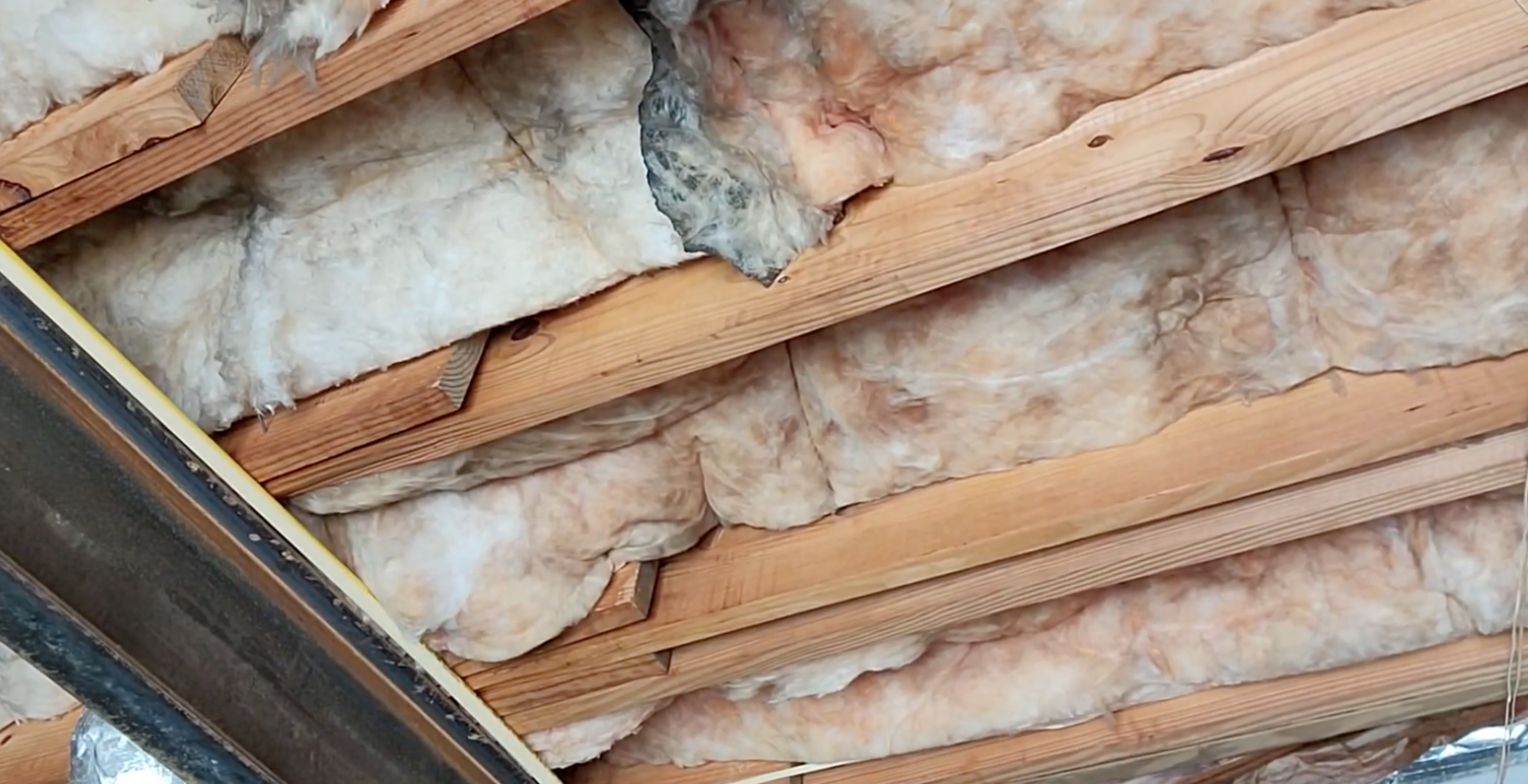
Without proper sealing, negative pressure above in a finished space can bring toxic chemicals into the adjacent spaces. Among other pollutants, chemicals will be coming from exhaust. Discoloration of the insulation in this homes shows that air is passing through - basically the insulation is being used as a filter, which means whatever this insulation doesn’t filter is entering the home, to say nothing of whatever the insulation is made of. There should be an air barrier where there is a thermal barrier to prevent these conditions. Additionally, there is an “energy penalty “for brining unconditioned air into a conditioned space in a non-controlled manner.
This insulation is also improperly installed, with many, wide gaps. Insulation only works if it’s in contact - these gaps and spaces mean it’s not providing the thermal barrier it should.
.jpg)
3.Significant holes in the building envelope - A prior HVAC team cut holes in the building envelope when installing ductwork. A garage should be completely sealed so the toxins can’t make it back into the main space.
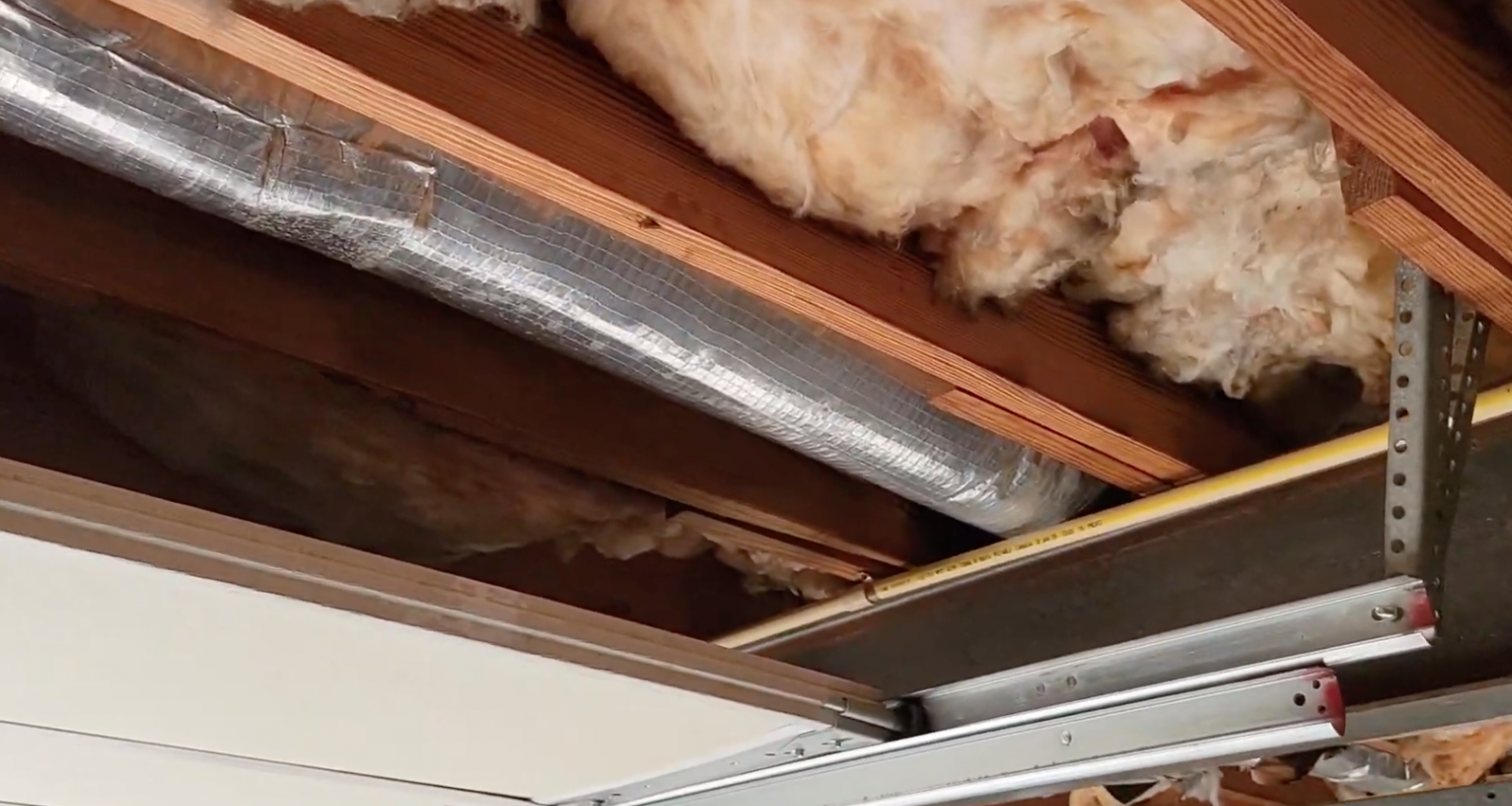
4. Ductwork - Ductwork in a garage poses a challenge. If there’s a return going to the space above, it’s probably not sealed 100%. Carbon Monoxide (CO) and other pollutants or chemicals will get sucked in through ductwork and into the house.
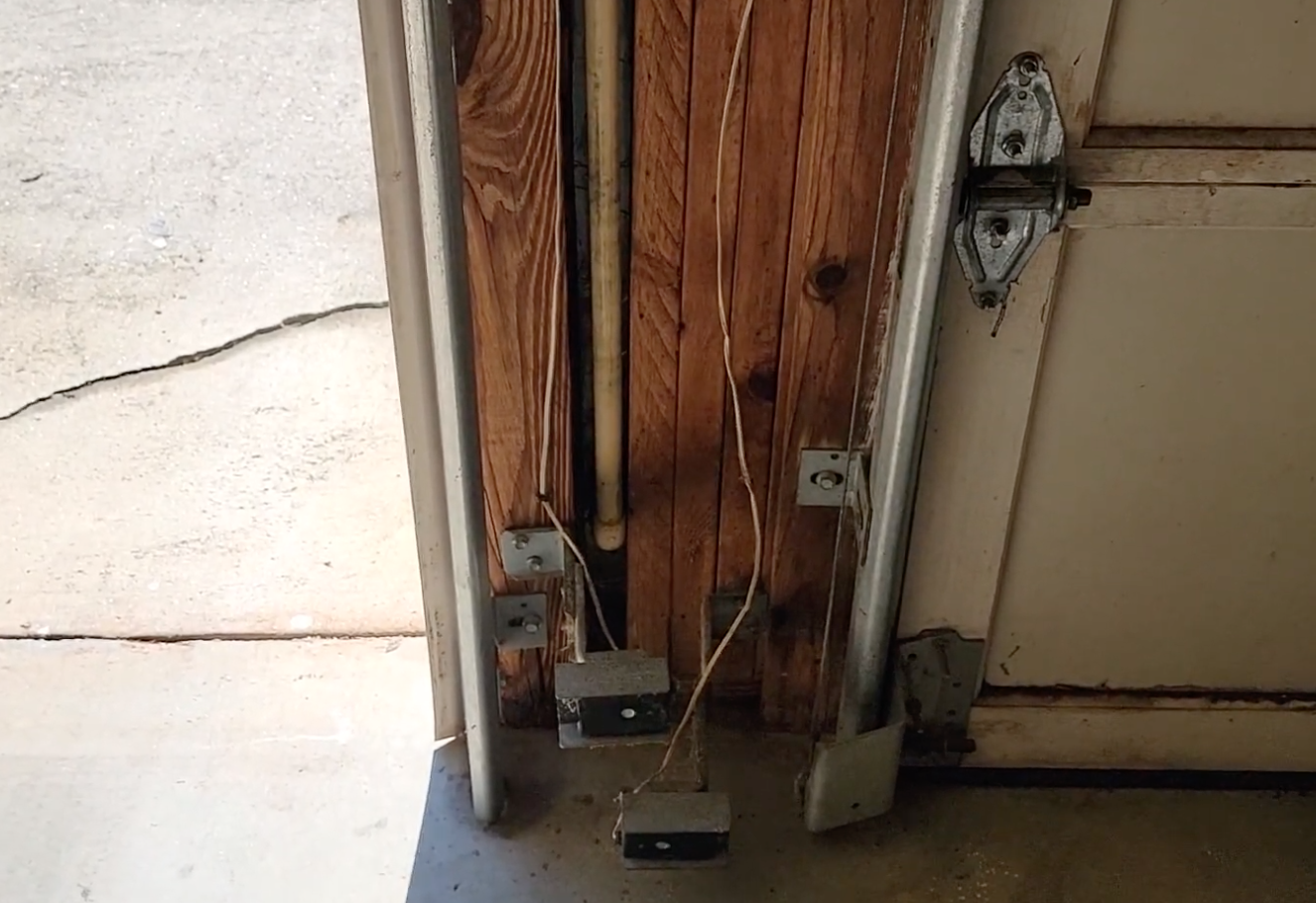
5. Structural challenges - Matt notes a steel beam supported by three 2x4s which have "seen better days.” These beams are close to the outside and can fail in the vent of water or termite damage. In an extreme situation, the area could collapse. matt plans to replace the wood with a steel post, and he will also inspect to make sure there’s a proper footing.
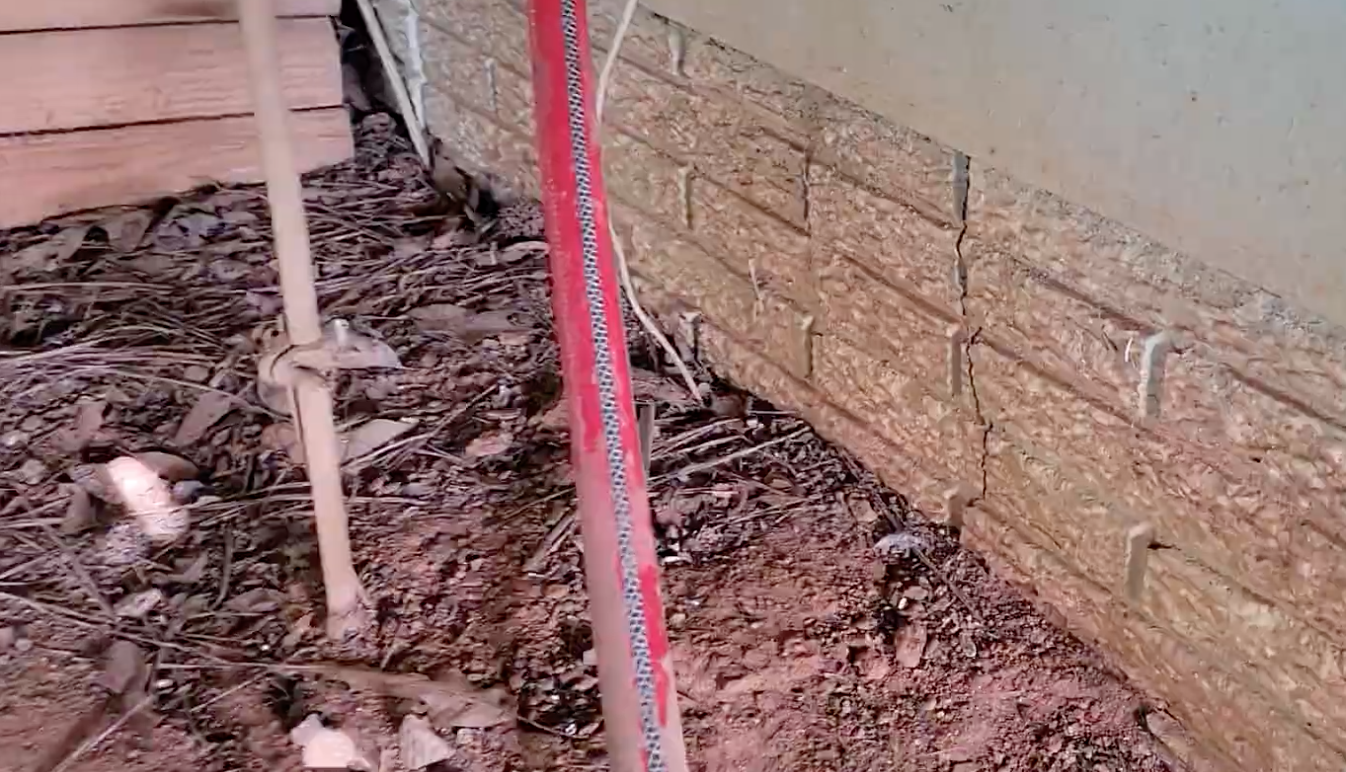
6. Water Management - There are several areas which indicate some moisture risk. Matt notes cracks in the slab as well as a crack in the foundation on the outside, which could serve as paths for water. There is some drainage present, and the building team will need to make sure it’s sufficient.
There’s also a downspout that releases water too close to the house and onto the driveway where there are also cracks in the pavement. An easy solution here would be to extend the downspout (a minimum of 5 feet is recommended). Cisterns are also common drainage solutions.
Matt also discusses that a Georgia slab built decades ago isn’t likely to have a vapor barrier. Matt will test for radon, and will install proper ventilation since the garage will be used as a workspace. He will also suggest an ERV to ventilate properly and help manage humidity. The home should have a vapor barrier, and the ground underneath should be depressurized so that spoil gases can be removed through the roof.
A few recommendations can help keep all garages safe:
- Do not leave engines running
- Use non-toxic chemicals only
- It’s worth ventilating garages, especially if sealing is imperfect. Make sure to bring fresh air in, and remove stale air (An ERV will do this with no "energy penalty” as it saves heat when it’s cold out, and removes heat when it’s hot out, and helps prevent moisture build up). Fresher garage air in an attached garage means less risk of infiltration inside the living spaces.
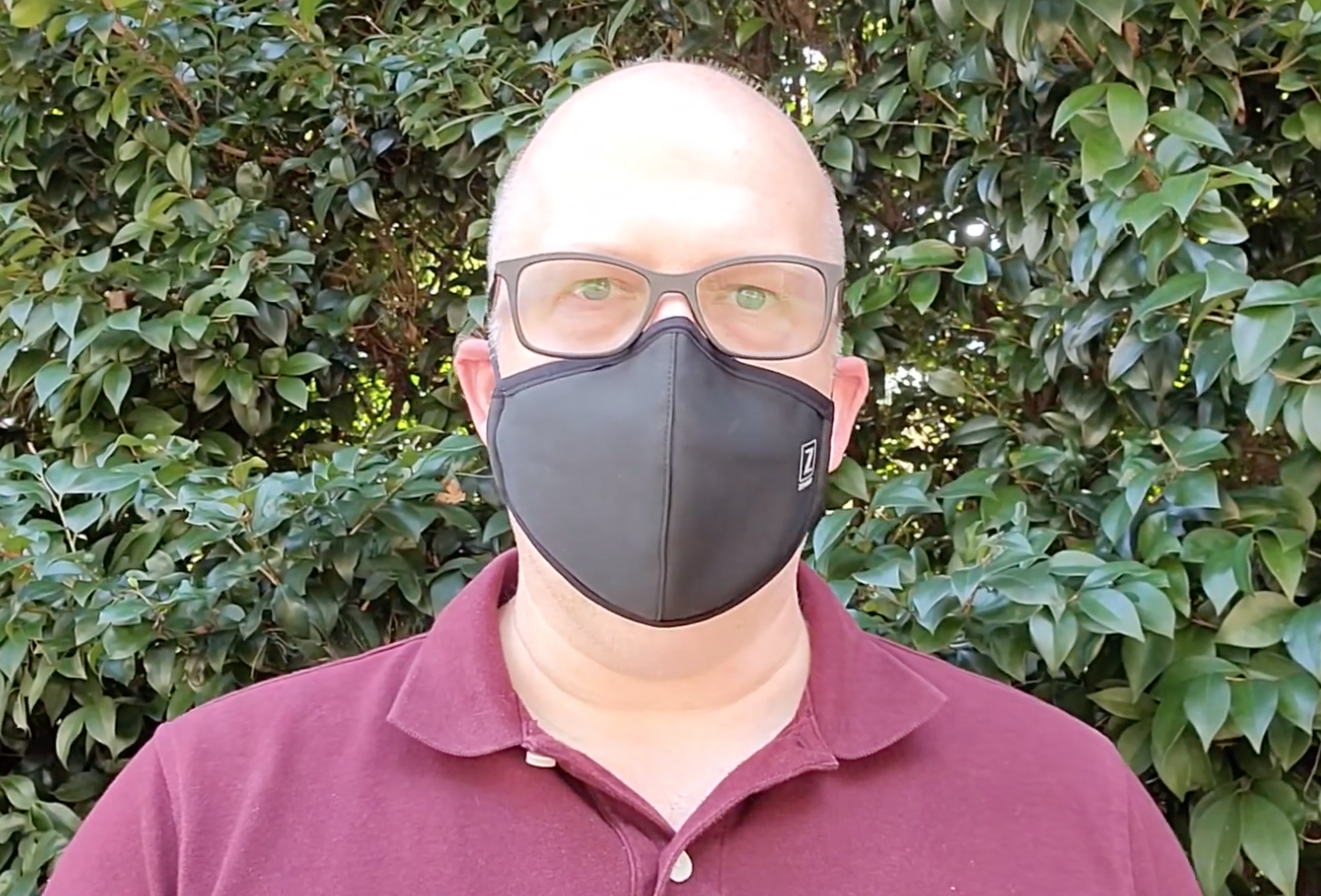
A Note on Masks:
Matt points out in this video that there are some great reasons to wear masks, even outside a pandemic. Right now, it’s a common-sense courtesy in case of client risk and health concerns. But as a builder, Matt’s often heading into active construction sites and new, unknown spaces in need of remodeling where there are plenty of particulates including dust and PM2.5, chemicals, and potentially mold that it’s not a good idea to breathe. if there’s dust, chemicals, or other irritants in the air, even when working outside, a mask is a great idea for protecting our health.
Please be kind and respectful!
Please make sure to be respectful of the organizations and companies, and other Rate It Green members that make up our community. We welcome praise and advice and even criticism but all posted content and ratings should be constructive in nature. For guidance on what constitutes suitable content on the Rate It Green site, please refer to the User Agreement and Site Rules.
The opinions, comments, ratings and all content posted by member on the Rate It Green website are the comments and opinions of the individual members who posts them only and do not necessarily reflect the views or policies or policies of Rate It Green. Rate It Green Team Members will monitor posted content for unsuitable content, but we also ask for the participation of community members in helping to keep the site a comfortable and open public forum of ideas. Please email all questions and concerns to admin@rateitgreen.com

